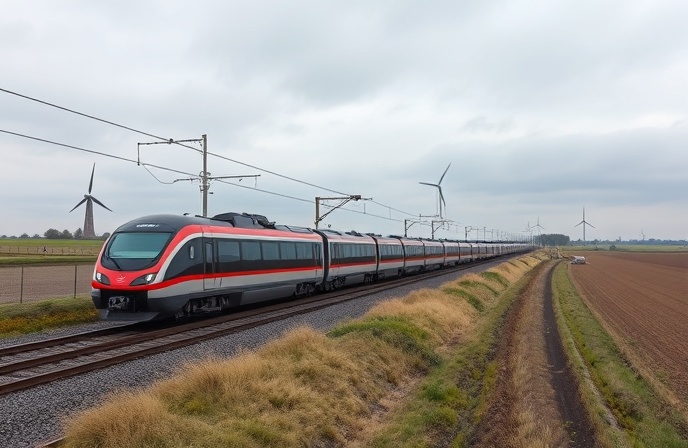Marmaray: 2026 Construction Update & Route Map
Marmaray’s Istanbul railway project, a feat of engineering, connects Europe and Asia via an undersea tunnel, significantly improving transport.

Marmaray Project Profile: Engineering the Bosphorus Rail Tunnel
The Marmaray project is a landmark in civil and railway engineering, creating a high-capacity transit corridor that directly connects the European and Asian continents beneath Istanbul’s Bosphorus Strait. This profile details the advanced tunneling techniques, integrated systems, and strategic importance of this 76.3 km rail network. The project sets a global benchmark for complex urban infrastructure, integrating a deep-sea immersed tube tunnel with a modernised suburban railway.
Project Fact Sheet
| Attribute | Details |
|---|---|
| Project Name | Marmaray Rail Project |
| Location | Istanbul, Turkey |
| Length | 76.3 km (48 miles) total system length |
| Max Speed | 105 km/h (65 mph) |
| Estimated Cost | US $4.5 Billion |
| Status | Operational |
| Key Contractors | Taisei Corp., Kumagai Gumi, Gama Endustri, Nurol Construction, Siemens Mobility, Hyundai Rotem |
Technical Specifications
The engineering core of the Marmaray project is its 13.6 km Bosphorus crossing, a multi-faceted tunneling challenge. This section was constructed using a combination of methods: 9.8 km were excavated using Tunnel Boring Machines (TBMs), 2.4 km employed cut-and-cover techniques for shallower sections, and the most challenging 1.4 km segment utilized immersed tube technology. The immersed tube section, assembled from prefabricated concrete elements sunk into a trench on the seabed, is one of the deepest of its kind in the world, reaching depths of 55 meters. This innovative approach was critical to overcoming the unique geological and seismic challenges of the Istanbul Strait.
To ensure safe and efficient high-frequency operations, the Marmaray line is equipped with state-of-the-art signaling and train control systems. Siemens Mobility implemented a comprehensive solution featuring Communication-Based Train Control (CBTC) for high-capacity automated operation and the European Rail Traffic Management System (ERTMS) Level 1 for interoperability. These systems are managed through a SCADA (Supervisory Control and Data Acquisition) network, providing centralized control and monitoring to manage a peak capacity of up to 75,000 passengers per hour with minimal headways.
The project’s scope extended far beyond the tunnel, involving a complete modernization of 63 km of existing suburban railway lines on both the European and Asian sides of Istanbul. This upgrade included the renovation of 37 existing stations and the construction of three new ones, creating a fully integrated, high-capacity commuter network. A fleet of 440 high-capacity electric multiple unit (EMU) rail cars was procured from Hyundai Rotem, designed specifically to meet the demands of the new line’s high-frequency service.
Key Takeaways
- Intercontinental Rail Link: The project created the first standard-gauge rail connection between Europe and Asia in Istanbul, fundamentally transforming urban and regional mobility by linking Halkali on the European side to Gebze on the Asian side.
- Pioneering Immersed Tube Technology: The successful construction of the 1.4 km immersed tube tunnel at a world-record depth set a new engineering precedent for underwater crossings in seismically active and geologically complex environments.
- Integrated Urban Mobility Solution: Marmaray is more than a tunnel; its integration with upgraded suburban lines and stations provides a comprehensive solution that significantly alleviates Istanbul’s chronic road congestion and reduces transportation-related emissions.
Frequently Asked Questions (FAQ)
What is the purpose of the Marmaray project?
The primary purpose of the Marmaray project is to provide a high-capacity, reliable, and modern mass transit railway connection between the European and Asian sides of Istanbul. It was designed to significantly reduce traffic congestion on the Bosphorus bridges, lower air pollution, and create a seamless transportation corridor across the city.
Who built the Marmaray tunnel?
The main civil engineering and tunneling works for the Marmaray project were built by a Japanese-Turkish consortium. This joint venture included Taisei Corporation and Kumagai Gumi from Japan, along with Gama Endustri and Nurol Construction from Turkey.

